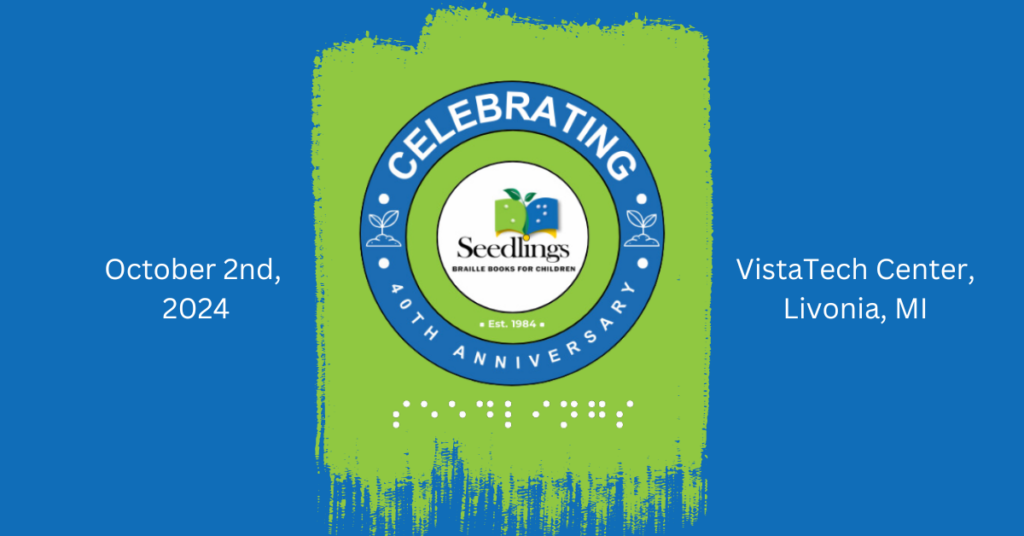The “National Geographic Learning” is an English language program used in private schools in Brazil in their bilingual education system, from very young ages to adults.
As a caregiver of a child with Leber Congenital Amaurosis, I’ve been adapting materials for visually impaired kids since 2021. Now, we are getting at the school challenges, which means much more work and effort into the educational process.
Below we will see how the schoolbooks can be inclusive and catch the kid’s interest – and, of course, it is important that the teachers bring objects to the classroom, so the VI children can explore them in a more expressive way.
All the pictures are part of the adaptation of a single unit of the book. To keep the content organized, I decided to make one short book (around 15 pages) for each chapter. This one is going to be used by a 4-year-old kid, who does not read yet, but is in the literacy process.
This is the cover of the book. Bigger braille was placed only for the child’s name.
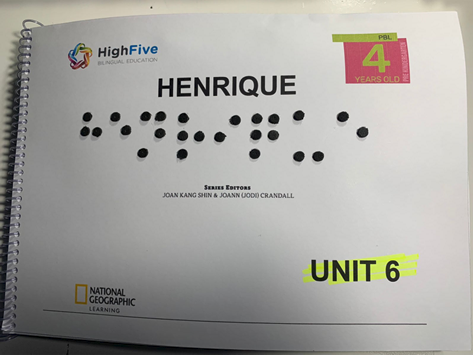
The opening of the chapter brings the vocabulary using images. Here, I’ve written in ink the name of the animals just as a reference for the teacher. Braille was added only where there was text written in the original book.
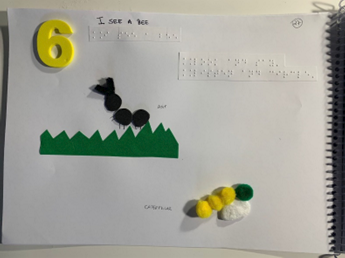
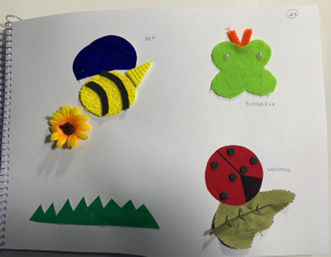
In this activity, kids need to listen to a sentence and circle what is asked. The numbers are covered in hot glue to make them tactile.
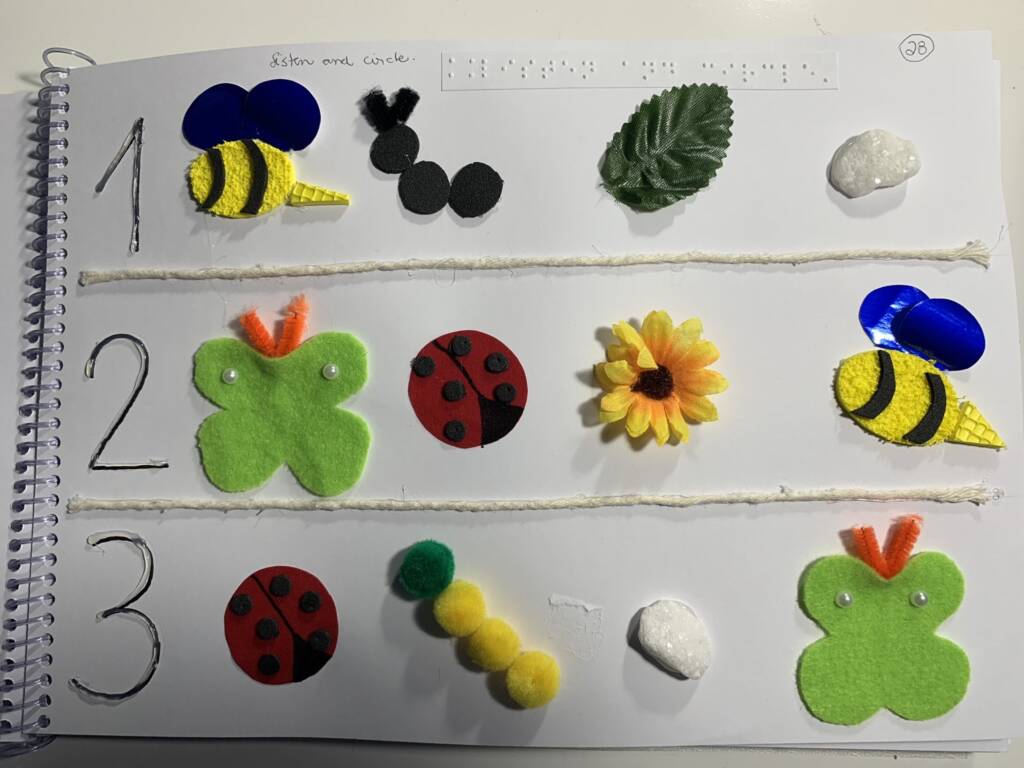
For the next activity, kids must identify the words that make the sound as in ‘rOck’, ‘sOcks’, ‘dOll’, and ‘bOx’.
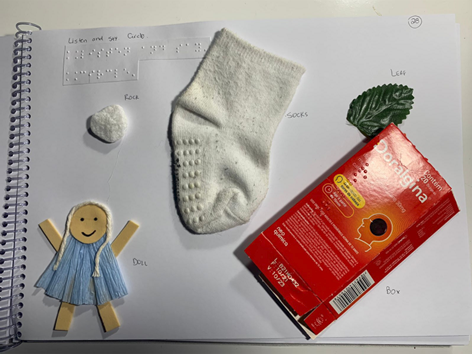
The 3-page activity below was adapted from a 1-page task. In the original, there were 27 very small animals (bee, ladybug and butterfly) spread around the sheet and the kids should find the one that they hear in the audio, count them and color. Here, I cut it into 3 parts (as there will be 3 audios to listen to). In each page I added other figures to challenge the identification of the correct ones.

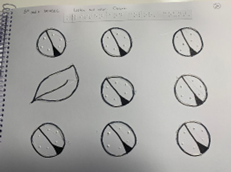

In the below image, the kids must follow the number sequence to complete the drawing. I’ve thought about writing the numbers in braille, but it ended up being too much information for a little kid who doesn’t identify braille numbers yet, so instead, I opted to use tiny pearls. With the teacher’s help, the child will be able to connect one dot to the next one.
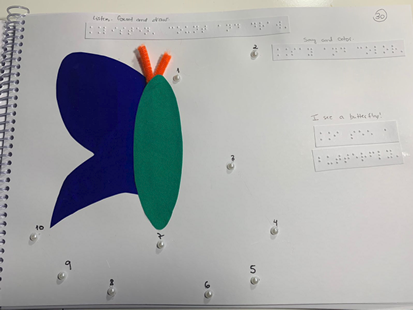
This shows a tactile flashcard of a butterfly’s life cycle.
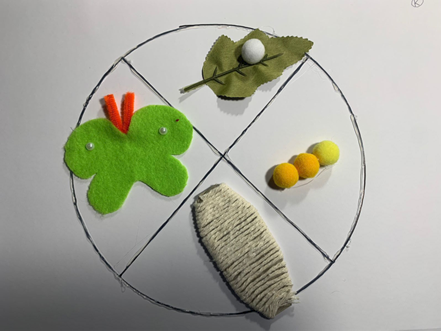
For the next activity, kids must draw their perceptions about an animal’s body transformation. This activity was also in one single page and is asking the children to identify what animals experience metamorphosis.
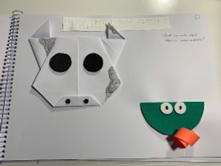
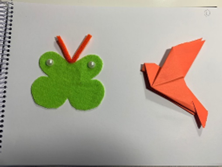
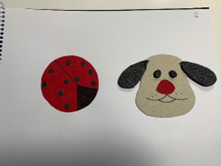
The last project is to create a metamorphosis, which will be made in a bigger paper.
To finish the unit, children are asked to tell how they feel about all the work. All the images have hot glue on the main information – the mouth, and the eyes in the angry face.
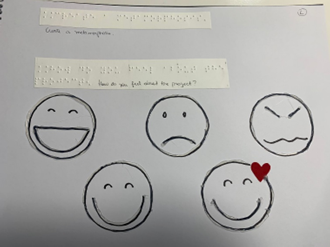
Besides knowing how much the 3-dimensional objects are extremely important during the learning in the classroom, I’ve noticed that having a good book to follow the directions given as the whole class is following increases the participation of the VI kid and their interest in the content.

